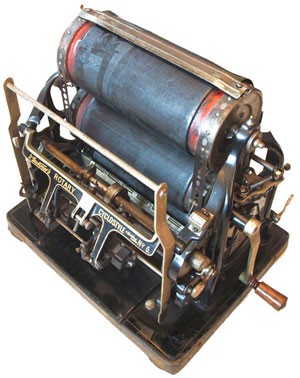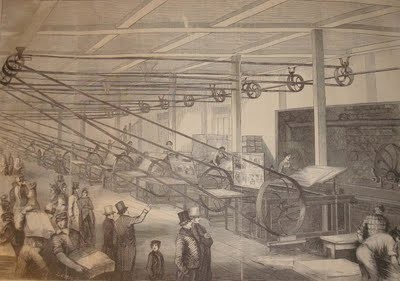
On one of the letterpress lists I read, someone asked for references for women working in the printing trade in 1879 St. Louis, MO, and doing “a menial job where she’ll get very inky through the course of her daily job.” There were quite a few answers, and one was from Richard Polinski, who referenced his blog post about the printing trade circa 1958.
![]() What interested me about the picture, and made me then read his post, were 2 things. First, when I got my press, my friend Eric told me it had probably been set up as those in the picture — by some sort of overhead pulley system that provided electricity. When I later tried to add a motor to my press, I found that I’d have to make quite a few modifications to accommodate one. Second, I was surprised to see so many women in the drawing, in the background. According to Polinski, they are feeding the presses. Read his entire post here.
What interested me about the picture, and made me then read his post, were 2 things. First, when I got my press, my friend Eric told me it had probably been set up as those in the picture — by some sort of overhead pulley system that provided electricity. When I later tried to add a motor to my press, I found that I’d have to make quite a few modifications to accommodate one. Second, I was surprised to see so many women in the drawing, in the background. According to Polinski, they are feeding the presses. Read his entire post here.

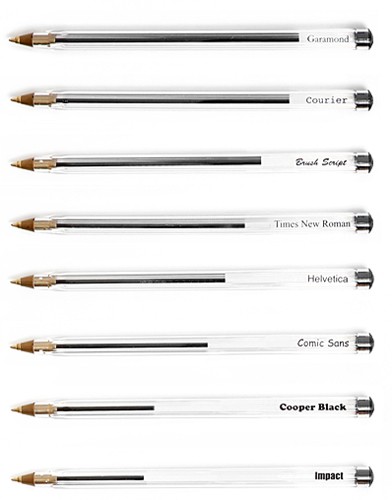
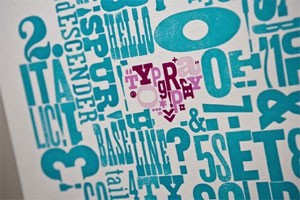
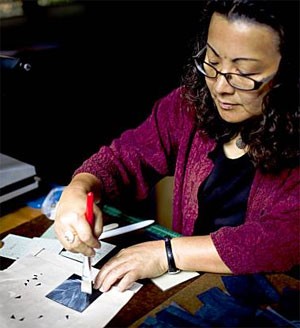 Here in the bay area, our local PBS station is showing a 2-part series called
Here in the bay area, our local PBS station is showing a 2-part series called  In my letterpress classes I am constantly reminding students to use a ruler or pica pole to measure things — Is the type straight on the page? Is it really centered? How much furniture do they need for the lockup? Some resist (although everyone comes around by the end of the day), but others start immediately to reminisce about using a type gauge, like the Haberule ones on the left.
In my letterpress classes I am constantly reminding students to use a ruler or pica pole to measure things — Is the type straight on the page? Is it really centered? How much furniture do they need for the lockup? Some resist (although everyone comes around by the end of the day), but others start immediately to reminisce about using a type gauge, like the Haberule ones on the left.